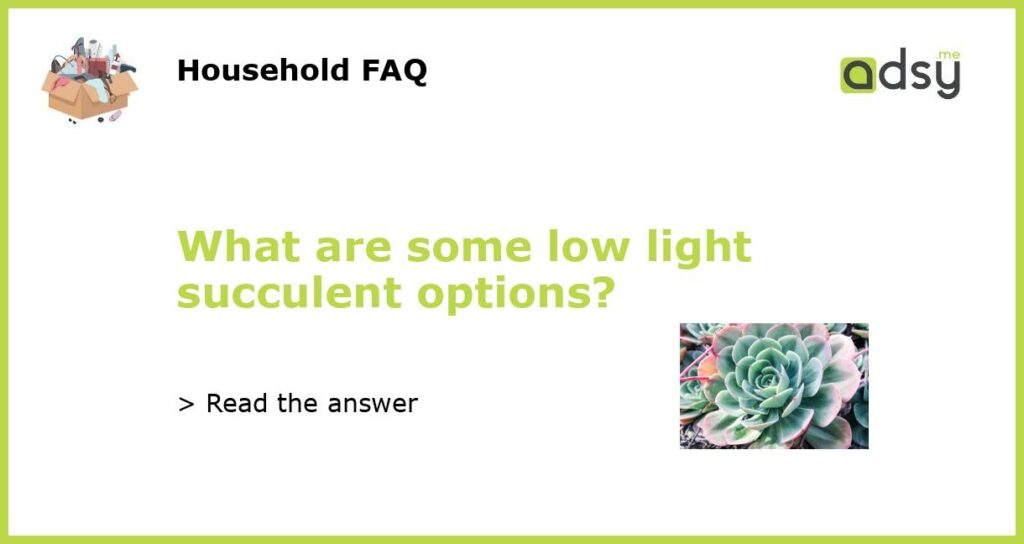Succulent Options for Low Light Conditions
If you have a room in your home or office that doesn’t receive much sunlight, you might think that growing plants is out of the question. However, there are some succulent options that can thrive in low light conditions. In this article, we will explore some of these low light succulents and provide tips on how to care for them.
Snake Plant (Sansevieria Trifasciata)
The snake plant, also known as Mother-in-Law’s Tongue, is a popular choice for low light spaces. It has long, upright leaves that are green with yellow edges. The snake plant is known for its ability to purify the air by removing toxins, making it a great addition to any indoor space.
This succulent is extremely low maintenance and can tolerate a wide range of light conditions, including low light. It only needs to be watered once every 2-3 weeks and can go longer without water if necessary. Be sure to allow the soil to dry out completely between waterings to prevent root rot.
Zebra Plant (Haworthia Fasciata)
The zebra plant is another low light succulent that is easy to care for. It gets its name from the white stripes that appear on its dark green leaves, giving it a zebra-like pattern. The zebra plant is native to South Africa and is often used as a decorative plant in homes and offices.
This succulent prefers bright, indirect light but can tolerate lower light conditions. It should be watered sparingly, allowing the soil to dry out completely between waterings. Overwatering can cause the roots to rot, so it’s important to be careful not to overdo it.
Ponytail Palm (Beaucarnea Recurvata)
The ponytail palm is not technically a succulent, but it is often grouped with them due to its water-storing capabilities. This plant has a unique appearance, with thin, arching leaves that resemble a ponytail. Despite its palm-like appearance, the ponytail palm is not a true palm.
This plant can tolerate a wide range of light conditions, including low light. It only needs to be watered sparingly, as it is capable of storing water in its bulb-like base. Overwatering can lead to root rot, so it’s best to err on the side of underwatering.
Haworthia Cooperi
Haworthia cooperi is a small succulent that is native to South Africa. It has chubby, translucent leaves that form rosettes, and it can be quite attractive. This plant is known for its ability to tolerate low light conditions, making it a great option for indoor spaces that don’t receive much sunlight.
Haworthia cooperi requires minimal care and only needs to be watered sparingly. It prefers well-draining soil, as sitting in wet soil can cause root rot. This plant also prefers temperatures between 70-80°F (21-27°C) and should be kept away from drafts.
Aloe Vera (Aloe Barbadensis)
Aloe vera is a succulent that is well-known for its medicinal properties. It has long, fleshy leaves that contain a gel-like substance that is commonly used to treat burns and sunburns. Aloe vera is also a great low light succulent option.
This plant prefers bright, indirect light but can tolerate lower light conditions. It should be watered sparingly, allowing the soil to dry out between waterings. Overwatering can lead to root rot, so it’s best to wait until the soil is completely dry before watering again.
In conclusion, if you have a low light space in your home or office, you can still enjoy the beauty and benefits of succulents. The snake plant, zebra plant, ponytail palm, Haworthia cooperi, and aloe vera are all low light succulent options that are easy to care for. Remember to provide them with the right amount of water and keep an eye on them for signs of overwatering. With proper care, these low light succulents can thrive and bring a touch of nature to any space.






